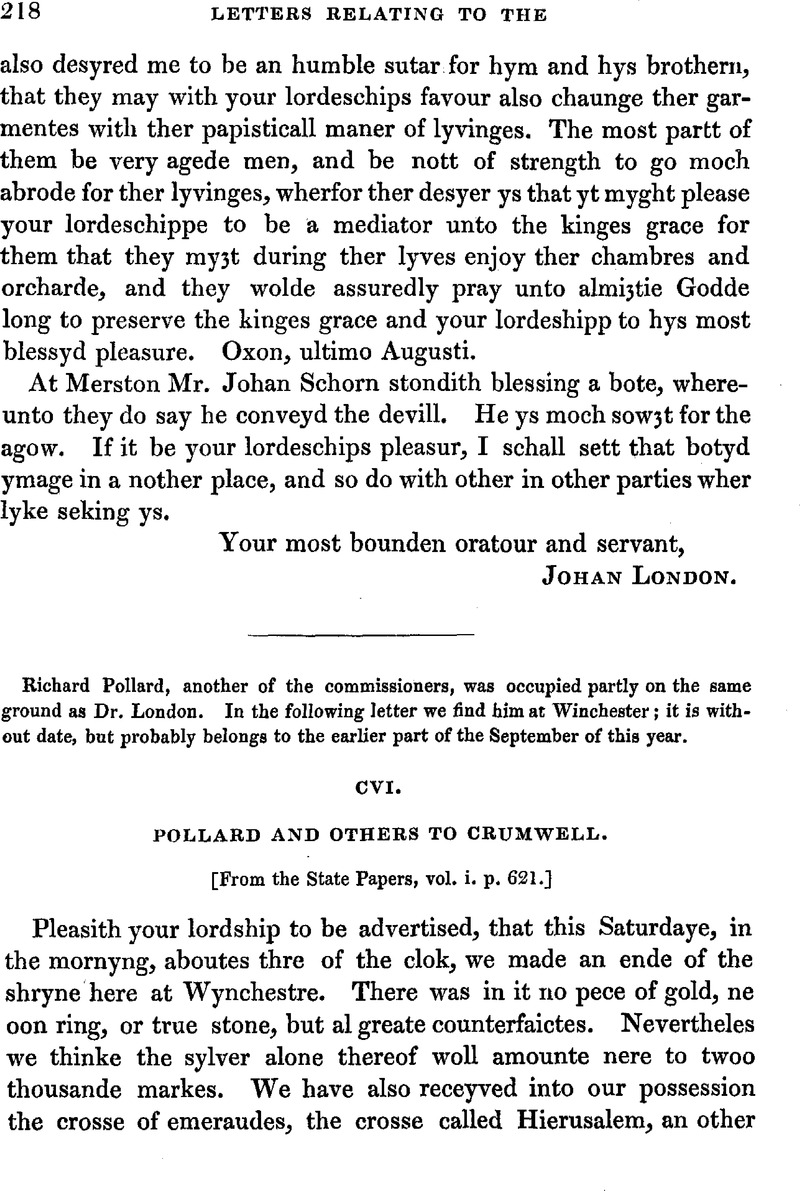No CrossRef data available.
Article contents
CVI. Pollard and Others to Crumwell
Published online by Cambridge University Press: 23 February 2010
Abstract

- Type
- Chapter II. From the Dissolution of the Smaller Houses to the Passing of the Act for the Dissolution of the Larger Monasteries
- Information
- Camden Old Series , Volume 26: Three Chapters of Letters Relating to the Suppression of Monasteries , September 1843 , pp. 218 - 220
- Copyright
- Copyright © Royal Historical Society 1843
References
* The monastery of Hyde, without the walls of Winchester, was the same abbey which, founded by King Alfred, was in Saxon times called the New Minster; but it then stood adjacent to the cathedral or Old Minster, from whence it was removed to Hyde in the reign of Henry I. There are still some remains. The last abbot was John Sulcot, or Saltcot, alias Capon, who for his subserviency to the court was made bishop of Bangor, and afterwards of Salisbury. The abbey of St. Mary was the nunnery founded in this city by king Alfred. The last abbess was Elizabeth Shelley.
† Sir Thomas Wryothesley, afterwards earl of Southampton.




